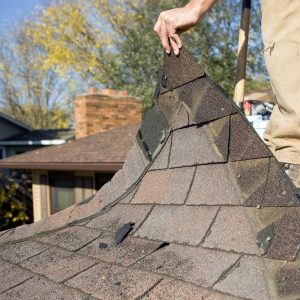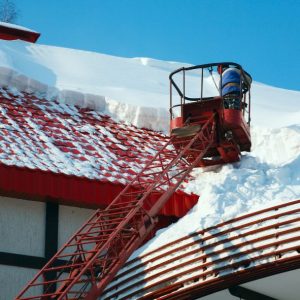As a homeowner, you know that your roof is one of the most important parts of your home. It’s what protects you and your family from the elements, after all. But did you know that extreme weather conditions can actually cause serious roof damage?
High winds, hail, and even heavy snowfall can wreak havoc on your roof. In fact, severe weather is one of the most common reasons why homeowners need to replace their roofs prematurely. If you’re not careful, you could find yourself shelling out big bucks for a new roof long before you ever thought you would have to.
So, what can you do to prevent extreme weather damage to your roof? Read on to find out.
Types of Roof Damage Caused by Extreme Weather
There are four main types of roof damage that can be caused by extreme weather conditions:
Wind Damage:
High winds can loosen or lift shingles from your roof, leaving your home vulnerable to water damage. In some cases, wind damage can also cause tree branches or other debris to fall on your roof, which can puncture holes in the shingles or even the underlying structure of your roof.
Hail Damage:
Hailstones can cause serious damage to asphalt shingles, wood shingles, metal roofs, and even slate roofs. While small hail pellets might only result in minor cosmetic damage, large hail stones can actually crack or break shingles, which will leave your home vulnerable to water leaks.


Snow Damage:
The weight of heavy snowfall can cause structural problems for some types of roofs. For example, flat roofs are particularly susceptible to snow damage because the weight of the snow can cause the roof to collapse. Metal roofs can also be bent or dented by heavy snowfall. And if snow and ice build-up on your roof and then melt and refreeze (a process known as “ice damming”), it can create pools of water that seep underneath your shingles and cause water damage to your home.
Heat Damage:
Believe it or not, extreme heat can also cause problems for your roof. Prolonged exposure to UV rays from the sun can break down asphalt shingles, causing them to become brittle and eventually crack or crumble. Excessive heat can also cause expansion and contraction problems for metal roofs.
How to Prepare Your Roof for Adverse Weather Conditions
In order to prepare your roof for severe weather conditions, there are a few things you can do:
1) Clean Your Gutters and Downspouts Regularly
The gutters and downspouts on your home play an important role in protecting your roof. By channeling water away from the base of your home, they help to prevent water damage and avoid the growth of mold and mildew. However, gutters and downspouts can quickly become clogged with leaves and debris, preventing them from doing their job. As a result, it’s important to clean your gutters and downspouts on a regular basis. With a little time and effort, you can keep your gutters clear and help protect your roof from costly damage.
2) Trim Trees and Bushes Around Your House
Winter weather can be tough on your roof. Between the heavy snowfalls and the sub-freezing temperatures, it’s no wonder that many homeowners experience roof damage during the winter months. One of the best ways to protect your roof is by trimming trees and bushes around your house. Overhanging branches can provide a pathway for ice and snow to slide off your roof, and they can also damage shingles and gutters when they break off. Trimming back any overhanging branches will help to prevent this type of damage. In addition, it’s a good idea to remove any dead branches from trees and bushes. These can become hazardous during winter storms, and they can also cause damage if they fall on your house. By taking these simple steps, you can help to protect your roof from winter weather damage.
3) Inspect Regularly to Avoid Roof Damage
The roof is one of the most important parts of your home, and it’s important to make sure that it’s in good condition. One of the best ways to protect your roof is by inspecting the roof regularly. By checking for damage and making sure that the roof is clear of debris, you can help to prevent problems before they start. In addition, it’s important to have your roof inspected by a professional every few years. A professional can spot problems that you might not be able to see, and they can also provide advice on how to keep your roof in good condition. By taking these steps, you can help to ensure that your roof will last for many years to come.
Conclusion
As a homeowner, it’s important to be aware of the types of damage that extreme weather conditions can cause to your roof—and how those damages can impact the rest of your home. By taking steps now to prevent weather-related damage to your roof, you can save yourself a lot of time, money, and stress down the road. So don’t wait—talk to a qualified and experienced roof contractor today about what you can do to protect your investment.




